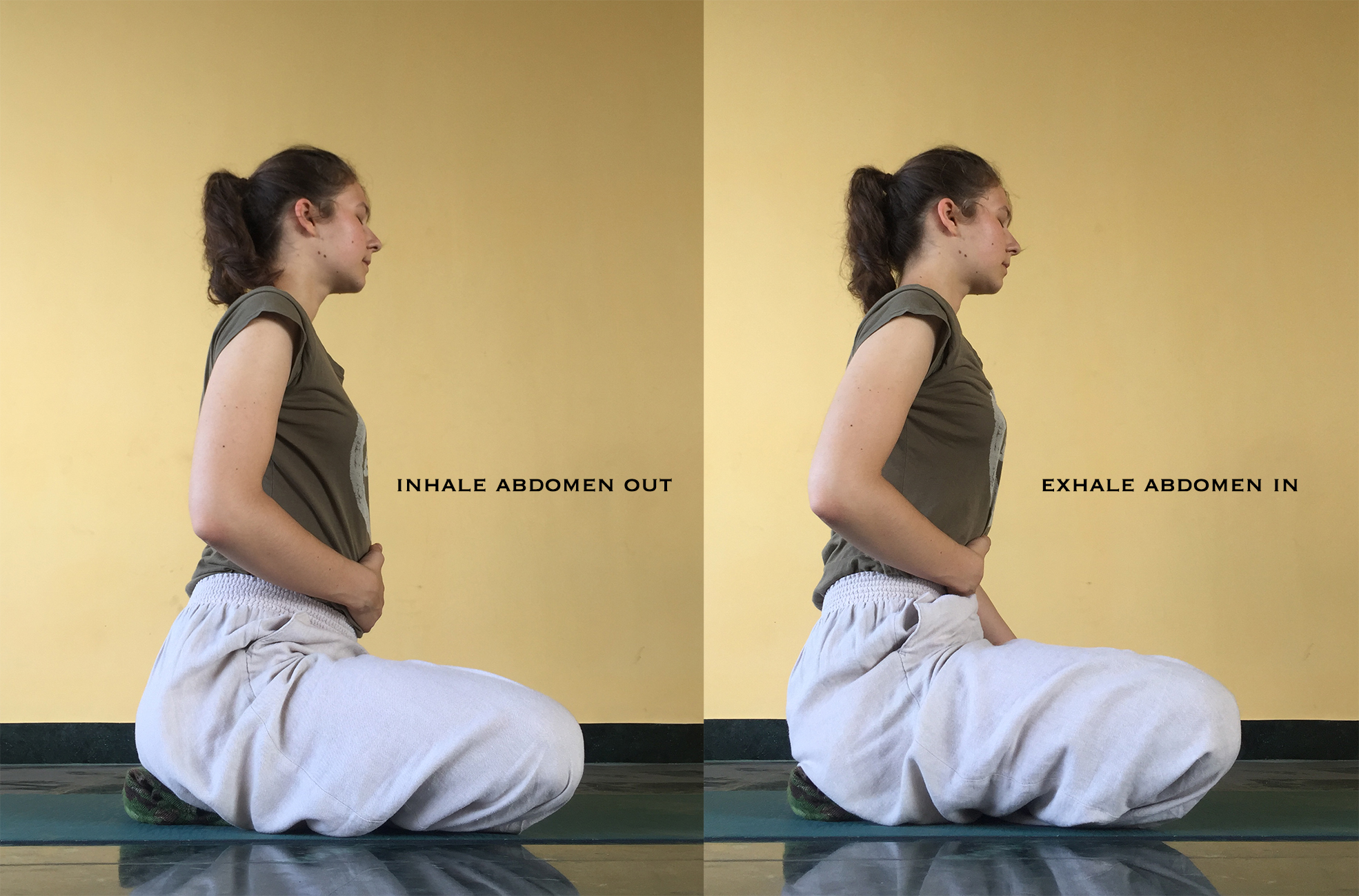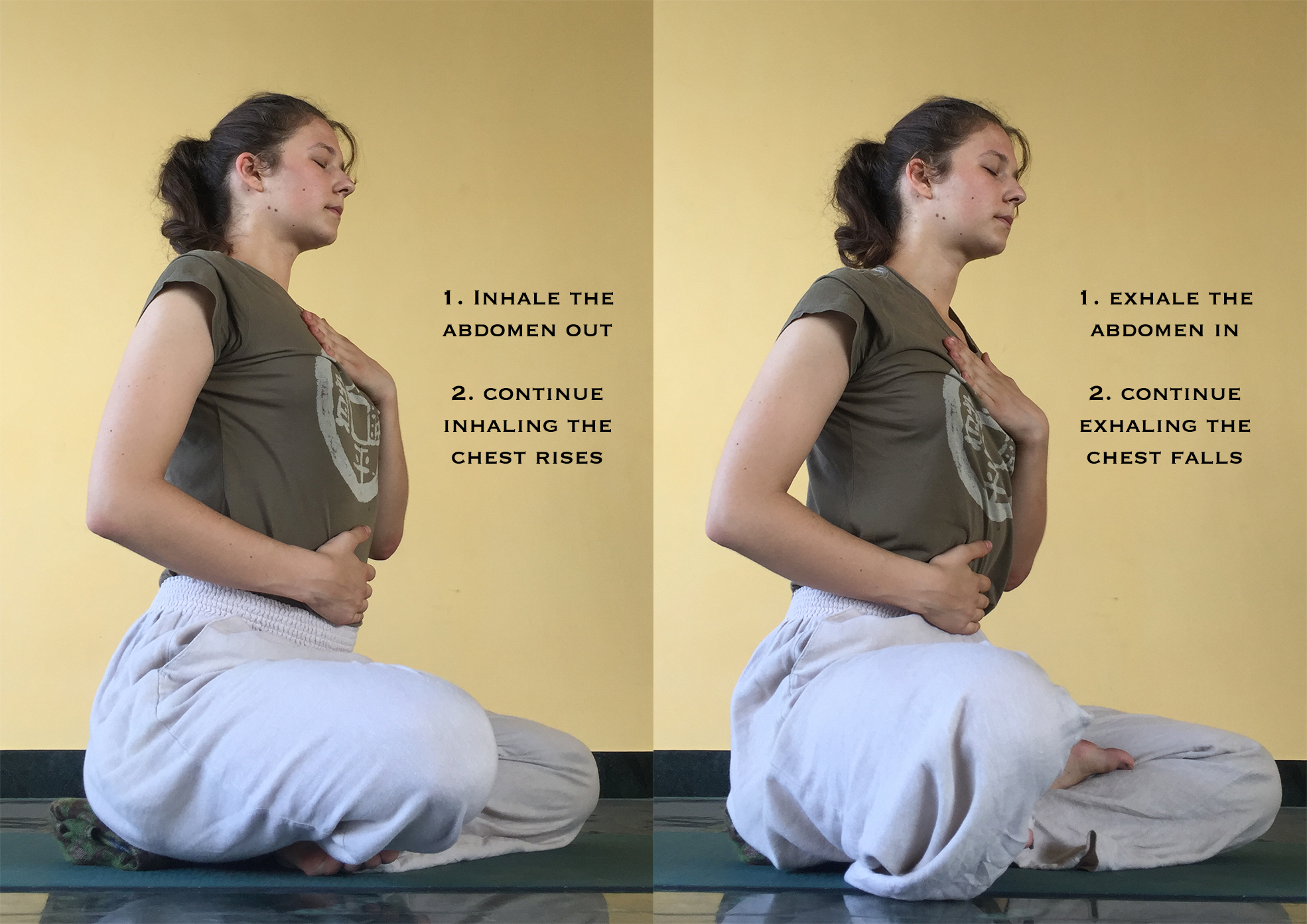Basic Breathing Techniques for a Revitalized Life!
The Abdominal Breath:
Often due to poor postural habits only the chest is used to breathe. This is a very small portion of the lung capacity and an inefficient use of the lungs. Additionally, this habit hardly ever allows for a full exhalation – meaning stale air stays in the lungs and there is minimal space for fresh air to circulate.
In the Abdominal Breath, we train ourselves to use the diaphragm to breathe into the abdomen, not into the chest, which allows allows air to fill the deepest part of the lungs. The diaphragm is a muscle that connects to the bottom of the rib cage and when contracted expands below the ribs allowing the lungs to expand downwards. When abdominal breathing is practiced it helps release the carbon dioxide and other waste products from the body and fills the lungs with fresh, clean air. As a bonus it helps us release stress we are usually carrying around stored as muscular tension in the abdominal area. So with a few minutes of this practice throughout the day, you can naturally increase your energy and relieve stress, for free!
This is the first breath practiced when learning to breathe properly. It can be done sitting cross-legged or laying flat on your back.
Only after this breath is mastered should you move on to the full yogic breath or practice basic pranayama.
Instructions:
Sit in a comfortable cross-legged posture, with the spine straight, or lay on your back in Savasana*. Place your right hand on your abdomen to bring awareness to the movement.
Inhale, raise the abdomen, as though you have a full belly. You should feel the hand rise with the abdomen, but the chest does not expand.
Slowly Exhale, bring the abdomen back in towards the spine, feeling the hand fall with your belly.
Continue this breath until it feels comfortable and natural.
*If you have trouble with this exercise in the seated posture it is easier to learn while laying on your back in Savasana. While laying down you may also place a book on the abdomen and see it lift to know you are using the correct muscles.
The Full Yogic Breath:
After you are comfortable with the Abdominal Breath, practice the Full Yogic Breath. This technique uses the full lung capacity, greatly increasing the oxygen levels in the body, leading to higher energy, calmness and better concentration.
Instructions:
Before practicing the full version of the breath, place your right hand on the abdomen and the left hand on the chest, to feel their movement.
As you inhale, feel the abdomen expand out, then the chest rises. As you exhale, the abdomen come in, then the chest falls.
Naturally as you inhale expanding the chest to its maximum the collarbone will also rise slightly.
Once you are comfortable with these two breathing practices you can begin learning the basic Pranayama Practices.
To better understand the integration of these types of breathing in the yoga practices please read about proper breathing in the Five Points of Yoga page.
If you have any questions about this practice please comment below or Contact Us.
May your day be full of life-giving breaths.
Om Shanti!
Rainbow Life Yoga






